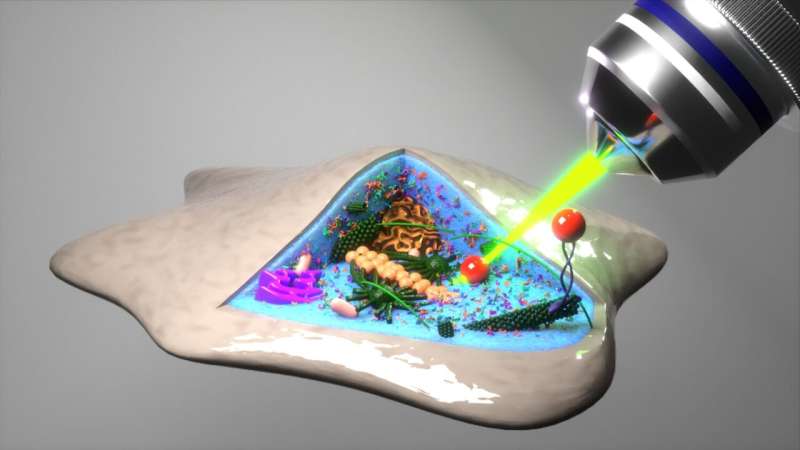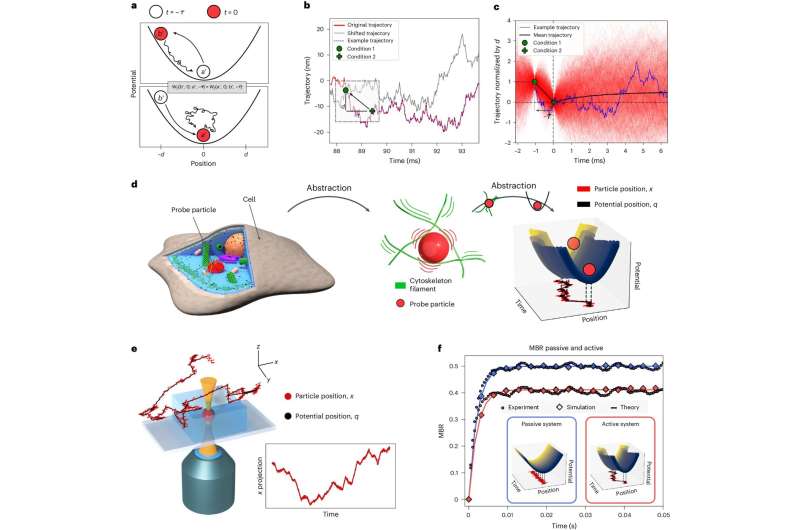This article has been reviewed according to Science X's editorial process and policies. Editors have highlighted the following attributes while ensuring the content's credibility:
fact-checked
peer-reviewed publication
trusted source
proofread
'Laser view' into the avocado: New method reveals cell interior

Checking whether an avocado is hard or soft by looking at it? This would require recognizing how the plant cells behave behind the skin. The same applies to all other cells on our planet: Despite more than 100 years of intensive research, many of their properties remain hidden inside the cell.
Researchers at the University of Göttingen describe in their recent publication in Nature Materials a new approach that can determine the particularly difficult-to-detect mechanical properties of the cell interior by taking a closer look.
Cells are the basic units of all life and their precise understanding is a key factor in the progress made in medicine and biology. Nevertheless, research on them is still challenging because many methods destroy the cell during analysis. Researchers at the University of Göttingen have now pursued a new idea: they used the random fluctuating movement that all microscopic particles perform.
To do this, they first simulated the expected fluctuations and then checked the predictions using optical laser traps that can precisely control microparticles. Using this approach, the research team was able to analyze the movement of microscopic particles—with precision in the nanometer range and a time resolution of around 50 microseconds.
In addition, the analysis also takes into account the history, i.e. past movements. It turned out that many objects always want to return to a certain place after having moved away randomly. The researchers used this tendency to return to a previous position to define a new quantity, the so-called mean back relaxation (MBR).
This new variable now serves as a kind of fingerprint: it contains information about the causes of the observed movements. This makes it possible for the first time to distinguish active processes from purely temperature-dependent processes (Brownian motion).
"With MBR, we can obtain more information from the object movements than is possible with the usual approaches," explains Professor Matthias Krüger from the Institute of Theoretical Physics at the University of Göttingen.

In order to make statements about living cells, the researchers applied the method to the inside of living cells.
"As our knowledge of the inside of cells is still limited, it was initially unclear whether the MBR could also be used here. When I saw the resulting curves, I could hardly believe my eyes, because the inside of cells could be described very precisely using the approaches we had originally worked out for much simpler situations," marvels Professor Timo Betz from the Third Institute of Physics, head of the experiments.
"The results show that the combination of a close look and new, intelligent analysis methods can provide insights into whether the inside of cells is soft, hard or liquid," says first author of the study, Till Münker from the Third Institute of Physics.
More information: Till M. Muenker et al, Accessing activity and viscoelastic properties of artificial and living systems from passive measurement, Nature Materials (2024). DOI: 10.1038/s41563-024-01957-2
Journal information: Nature Materials
Provided by University of Göttingen



















